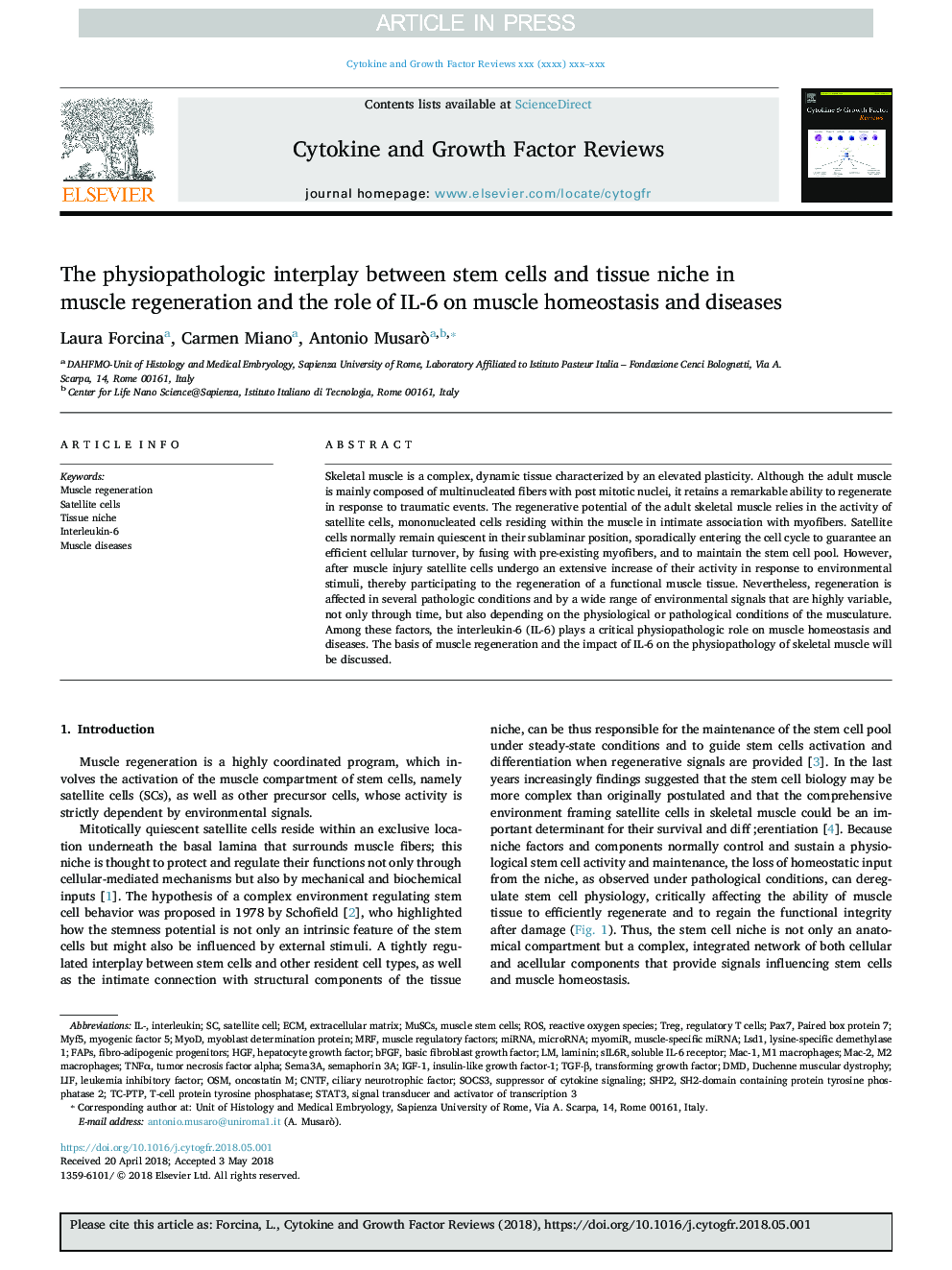| Article ID | Journal | Published Year | Pages | File Type |
|---|---|---|---|---|
| 8466190 | Cytokine & Growth Factor Reviews | 2018 | 9 Pages |
Abstract
Skeletal muscle is a complex, dynamic tissue characterized by an elevated plasticity. Although the adult muscle is mainly composed of multinucleated fibers with post mitotic nuclei, it retains a remarkable ability to regenerate in response to traumatic events. The regenerative potential of the adult skeletal muscle relies in the activity of satellite cells, mononucleated cells residing within the muscle in intimate association with myofibers. Satellite cells normally remain quiescent in their sublaminar position, sporadically entering the cell cycle to guarantee an efficient cellular turnover, by fusing with pre-existing myofibers, and to maintain the stem cell pool. However, after muscle injury satellite cells undergo an extensive increase of their activity in response to environmental stimuli, thereby participating to the regeneration of a functional muscle tissue. Nevertheless, regeneration is affected in several pathologic conditions and by a wide range of environmental signals that are highly variable, not only through time, but also depending on the physiological or pathological conditions of the musculature. Among these factors, the interleukin-6 (IL-6) plays a critical physiopathologic role on muscle homeostasis and diseases. The basis of muscle regeneration and the impact of IL-6 on the physiopathology of skeletal muscle will be discussed.
Keywords
IL-IGF-1DMDSema3AECMHGFFAPSSHP2SOCS3LSD1TregMyoDPax7Myoblast Determination ProteinMyf5TC-PTPM1 macrophagesMuscle regulatory factorsLIFTGF-βOSMSTAT3TNFαCNTFbFGFMRFROSlysine-specific demethylase 1insulin-like growth factor-1oncostatin Minterleukininterleukin-6Muscle regenerationMuscle diseasestransforming growth factortumor necrosis factor alphaDuchenne muscular dystrophysuppressor of cytokine signalingSatellite cellMuscle stem cellsSatellite cellsRegulatory T cellsSemaphorin 3AHepatocyte growth factorMyogenic Factor 5leukemia inhibitory factorbasic fibroblast growth factorciliary neurotrophic factorLamininExtracellular matrixM2 macrophagessignal transducer and activator of transcription 3Mac-1Mac-2MicroRNAMiRNAT-cell protein tyrosine phosphataseReactive oxygen speciesSoluble IL-6 receptor
Related Topics
Life Sciences
Biochemistry, Genetics and Molecular Biology
Cell Biology
Authors
Laura Forcina, Carmen Miano, Antonio Musarò,
